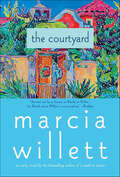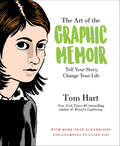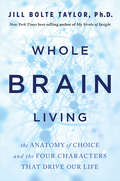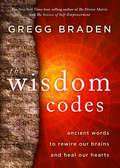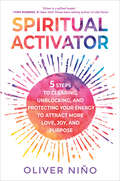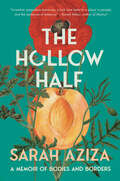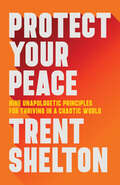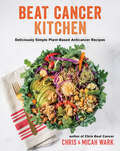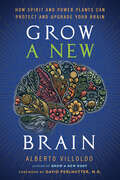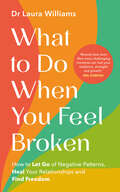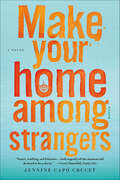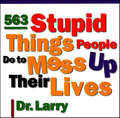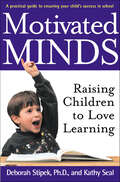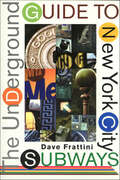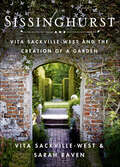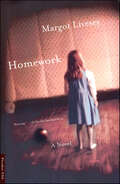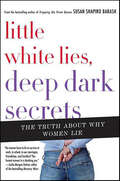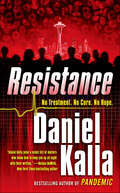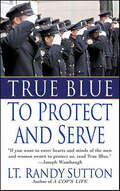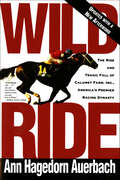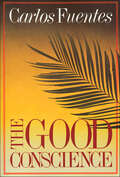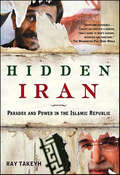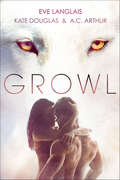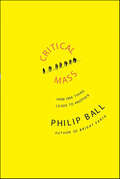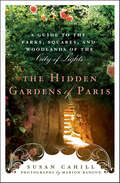- Table View
- List View
The Courtyard
by Marcia WillettIn this latest early novel from the beloved Marcia Willett, Henry Morley can only wonder at the good fortune that has given him a vivacious wife and a beloved family home called Nethercombe. When he remodels a cluster of cottages known as the Courtyard, he is delighted to welcome a group of charming tenants. But soon disaster strikes, and everyone must come together to face the crises head on. Marcia Willett's ardent fans will savor a return visit with some of her most endearing characters.The Courtyard is a gem of a story to be savored.
The Art of the Graphic Memoir: Tell Your Story, Change Your Life
by Tom Hart#1 New York Times bestselling author and Eisner-nominated cartoonist Tom Hart has written a poignant and instructive guide for all aspiring graphic memoirists detailing the tenets of artistry and story-telling inherent in the medium. Hart examines what makes a graphic memoir great, and shows you how to do it. With two dozen professional examples and a deep-dive into his own story, Hart encourages readers to hone their signature style in the best way to represent their journeys on the page. With clear examples and visual aids, The Art of the Graphic Memoir is emotive, creative, and accessible. Whether you're a comics fan, comic book creator, memoirist, biographer or autobiographer, there’s something inside for everyone.
Whole Brain Living: The Anatomy of Choice and the Four Characters That Drive Our Life
by Jill Bolte Taylor PhDThe New York Times best-selling author of My Stroke of Insight blends neuroanatomy with psychology to show how we can short-circuit emotional reactivity and find our way to peace.For half a century we have been trained to believe that our right brain hemisphere is our emotional brain, while our left brain houses our rational thinking. Now neuroscience shows that it's not that simple: in fact, our emotional limbic tissue is evenly divided between our two hemispheres. Consequently, each hemisphere has both an emotional brain and a thinking brain. In this groundbreaking new book, Dr. Jill Bolte Taylor presents these four distinct modules of cells as four characters that make up who we are: Character 1, Left Thinking; Character 2, Left Emotion; Character 3, Right Emotion; and Character 4, Right Thinking.Everything we think, feel, or do is dependent upon brain cells to perform that function. Since each of the Four Characters stems from specific groups of cells that feel unique inside of our body, they each display particular skills, feel specific emotions, or think distinctive thoughts. In Whole Brain Living, Dr. Taylor shows us how to get acquainted with our own Four Characters, observe how they show up in our daily life, and learn to identify and relate to them in others as well. And she introduces a practice called the Brain Huddle--a tool for bringing our Four Characters into conversation with one another so we can tap their respective strengths and choose which one to embody in any situation.The more we become familiar with each of the characters in ourselves and others, the more power we gain over our thoughts, our feelings, our relationships, and our lives. Indeed, we discover that we have the power to choose who and how we want to be in every moment. And when our Four Characters work together and balance one another as a whole brain, we gain a radical new road map to deep inner peace.
The Wisdom Codes: Ancient Words to Rewire Our Brains and Heal Our Hearts
by Gregg BradenThe cutting edge of neurolinguistics meets the spiritual wisdom of the ages in a handbook of key words that literally rewire our brains.New discoveries in biology and the neurosciences are revealing how the structure of language-the words we think and speak-can actually change the way the neurons in our brains and hearts connect. But our ancestors understood this connection intuitively, thousands of years ago. They created specific word-patterns to provide comfort, healing, strength, and inner power in difficult times, and they encoded these powerful words in prayers, chants, mantras, hymns, and sacred writings to preserve them for future generations. Now beloved teacher and thought leader Gregg Braden cracks the code and puts these powerful words in your hands.Perfect as a pocket guide, a reference for spiritual study, or a gift to someone you love, this elegant, compact book contains Wisdom Codes that cut to the core of life's greatest tests, most challenging demands, and hardest lessons. You'll find chapters devoted to healing from loss and grief, facing your unspoken fears, finding certainty in the face of uncertain choices, and finding forgiveness, as well as ancient parables that offer a "fast track" to unraveling life's deepest mysteries. Each Wisdom Code-distilled from a quote, a scripture passage, or a parable-is accompanied by a brief discussion of what the code means, why it's important, and how to apply it in your life.
Spiritual Activator: 5 Steps to Clearing, Unblocking, and Protecting Your Energy to Attract More Love, Joy, and Purpose
by Oliver NinoA 5-step energy detox program from renowned energy healing expert, Oliver Nino that removes the crippling blocks from your energetic field that stand between you and abundance, purpose, and happiness.Renowned energy healer and spiritual activation expert, Oliver Nino shares his 5-step energy reset that eliminates the toxins that hold you back from being in your healthiest state.In this book, Oliver explains how energetic blocks lodge themselves in your system as negative beliefs, emotions, and sometimes even physical conditions. Traumas, ancestral roots, or environmental factors create feelings of fear, guilt, anger, betrayal, uselessness, hurt, and inadequacy that can flow through you like dangerous, free radicals. These create walls in your energetic field, which can cause physical disease, relationship issues, feeling &“stuck,&” a lack of abundance, a lack of purpose, a lack of confidence, anxiety, depression, or a general feeling of unhappiness.Writes Oliver, "I find that when you cleanse, or remove, the blocks that weigh people down using my healing techniques, it not only detoxes their energetic fields—thus, healing various aspects of wellness—but also allows them to tap into a higher power and activate their own gifts, so that they can pursue their purpose on earth. Every one of us is naturally wired to clear our energy fields. Our souls arrived here in a clear, energetic state, and so it&’s possible to return to our natural way of being."
The Hollow Half: A Memoir of Bodies and Borders
by Sarah AzizaA brush with death. An ancestral haunting. A century of family secrets. Sarah Aziza&’s searing, genre-bending memoir traces three generations of diasporic Palestinians from Gaza to the Midwest to New York City—and back&“You were dead, Sarah, you were dead.&” In October 2019, Sarah Aziza, daughter and granddaughter of Gazan refugees, is narrowly saved after being hospitalized for an eating disorder. The doctors revive her body, but it is no simple thing to return to the land of the living. Aziza&’s crisis is a rupture that brings both her ancestral and personal past into vivid presence. The hauntings begin in the hospital cafeteria, when a mysterious incident summons the familiar voice of her deceased Palestinian grandmother.In the months following, as she responds to a series of ghostly dreams, Aziza unearths family secrets that reveal the ways her own trauma and anorexia echo generations of violent Palestinian displacement and erasure—and how her fight to recover builds on a century of defiant survival and love. As she moves towards this legacy, Aziza learns to resist the forces of colonization, denial, and patriarchy both within and outside her.Weaving timelines, languages, geographies, and genres, The Hollow Half probes the contradictions and contingencies that create &“nation&” and &“history.&” Blazing with honesty, urgency, and poetry, this stunning debut memoir is a fearless call to imagine both the self and the world anew.
Protect Your Peace: Nine Unapologetic Principles for Thriving in a Chaotic World
by Trent SheltonHard-won wisdom, practical strategies, personal stories, and deep inspiration to help you reframe your life as a force for good&“A voice that stands out, reaches into your soul, and gives you the answers and the tools to overcome your challenges and achieve more.&” — Dean Graziosi, best-selling authorYour perspective on life can be your power or your prison. It can serve your anxiety, your stress, and your depression, or it can support your peace, your courage, and your growth.Trent Shelton, one of the most groundbreaking and dynamic teachers of our time, wants to help you chart your path to a new perspective. Protect Your Peace offers tools to reshape your mindset and redefine the meaning you find in your life—tools that he knows can work for you, because he has used them himself to transform his own life.In these pages, Trent outlines nine essential principles to help you:Protect your energy from the things that drain it Protect your mind from the things that distract youProtect your soul from the things that don&’t fulfill youYou'll learn simple strategies for setting clear boundaries, disconnecting from negativity, honing your vision and your focus, and bringing your life into alignment with your true power and purpose—with Trent as your straight-talking, profoundly inspiring guide who's with you every step of the way.Trent lets you know in no uncertain terms that there is a war on—a war for your worth. The toughest battle in it is the one you&’re fighting within yourself. And Protect Your Peace gives you a road map to victory.
Beat Cancer Kitchen: Deliciously Simple Plant-Based Anticancer Recipes
by Chris Wark Micah Wark125+ recipes for prevention and healingSupply your body with an abundance of life-giving nutrients to repair, regenerate, detoxify, and heal, all while providing the comfort that all good food should. Following the success of Chris Beat Cancer, Chris Wark and his wife, Micah, share whole-food, plant-based recipes that appeal to the whole family, whether you are healing from cancer, actively eating a diet to prevent it, or simply seeking a healthy lifestyle for you and your loved ones.Fruits, vegetables, mushrooms, nuts, seeds, legumes, whole grains, herbs, and spices are the foundational ingredients of Chris's anticancer diet. Complete with tips for diet optimization, this cookbook will get you in the Beat Cancer Mindset and guide you onto the road to wellness.Inside you will find:· easy-to-make nutrient-rich recipes for healing,· family-friendly recipes for prevention and overall health,· full-color photos of each recipe, and· salad, juice, smoothie, soup, side, veggie bowl, breakfast, lunch, dinner, and dessert recipes galore!
Grow a New Brain: How Spirit and Power Plants Can Protect and Upgrade Your Brain
by Dr. Alberto VilloldoGrowing older is inevitable, but aging can be prevented, even reversed—but only when you upgrade your brain, using both ancient and modern science, to create psychosomatic health.A healthy brain is the foundation for a healthier and more fulfilling life, and in Grow A New Brain, modern shamanic practitioner Alberto Villoldo reveals research and introduces protocols for readers to improve their brain function, right now. It combines ancient and modern science to eliminate old senescent cells, detoxify your brain and body, reduce inflammation, increase the growth of brain cells that support neuroplasticity, and more. Readers will learn:How to turn your kitchen into a shaman&’s laboratory to make your own probiotics that repair that gut and produce neurotransmitters that balance the brain.How to use shamanic meditative techniques to switch on genes for health and turn off genes for illness and disease, and drawing on the science of epigenetics how to avoid being trapped in the destiny inherent in your genetic codingHow to reverse damage to the brain caused by free radicals and restore the functioning of our mitochondria (or power centers) in our cells.How to increase the amount of BDNF (brain-derived neurotrophic factor) you produce, allowing you to grow new brain cells (neurogenesis) that will support neuroplasticity.
What to Do When You Feel Broken: How to Let Go of Negative Patterns, Heal Your Relationships and Find Freedom
by Dr Laura Williams&‘Trauma doesn't have to be the end of your story—it can be the beginning of a new, stronger chapter. What to Do When You Feel Broken dives deep into the transformative process known as post-traumatic growth, revealing how even life's most challenging moments can fuel your resilience, strength, and growth.&’—Mel Robbins, bestselling author and host of The Mel Robbins PodcastYou&’re not broken. Learn how your past impacts your present and develop the mindset you need to break damaging patterns.Clinical psychologist Dr Laura Williams&’ life turned upside down when her husband suddenly died at the age of 37, when they had three young children. This trauma forced her to reconsider the psychological teachings she&’d used professionally to help hundreds of others and apply them to her own life. Dr Laura uses her own personal story to illustrate key psychological concepts we can all benefit from applying to our own lives. You'll learn how to:Get to know yourself fully and understand what drives your behaviour and how it impacts your relationships Examine your early conditioning to gain new insight into destructive feelings that you may have repressed for years Use Dr Laura&’s four-step HEAL framework to move forward consciously on a new path The toolbox of knowledge and techniques in this book will empower you to pick up your &‘broken parts&’ and put them back together to live life with resilience, wisdom and fortitude.
Make Your Home Among Strangers: A Novel
by Jennine Capó CrucetA New York Times Book Review Editor's Choice, winner of the International Latino Book Award for Best Latino-themed Fiction 2016, Longlisted for the 2015 Center for Fiction First Novel Prize.Named a best book of the season by Cosmopolitan, Vanity Fair, Harper's Bazaar, Redbook, Bustle, NBC Latino and Men's JournalThe arresting debut novel from award-winning writer Jennine Capó CrucetWhen Lizet-the daughter of Cuban immigrants and the first in her family to graduate from high school-secretly applies and is accepted to an ultra-elite college, her parents are furious at her decision to leave Miami. Just weeks before she's set to start school, her parents divorce and her father sells her childhood home, leaving Lizet, her mother, and Leidy-Lizet's older sister, a brand-new single mom-without a steady income and scrambling for a place to live.Amidst this turmoil, Lizet begins her first semester at Rawlings College, distracted by both the exciting and difficult moments of freshman year. But the privileged world of the campus feels utterly foreign, as does her new awareness of herself as a minority. Struggling both socially and academically, she returns to Miami for a surprise Thanksgiving visit, only to be overshadowed by the arrival of Ariel Hernandez, a young boy whose mother died fleeing with him from Cuba on a raft. The ensuing immigration battle puts Miami in a glaring spotlight, captivating the nation and entangling Lizet's entire family, especially her mother. Pulled between life at college and the needs of those she loves, Lizet is faced with difficult decisions that will change her life forever. Urgent and mordantly funny, Make Your Home Among Strangers tells the moving story of a young woman torn between generational, cultural, and political forces; it's the new story of what it means to be American today.
563 Stupid Things Stupid People Do to Mess Up Their Lives
by Larry SamuelHave you, or has anyone you know, ever suffered from stupidity?From Dr. Larry, the Internationally Renowned Psychotherapist, Self-Righteous Occupier of the Moral High Ground, and All-Around Better Person than You, comes 563 Stupid Things People Do to Mess Up Their Lives. Dr. Larry's previous books, such as You Can't Spell Stupid Without U and I and Why Mediocre Things Happen to Mediocre People, have changed the lives of millions of intelligence-challenged individuals all over the world. So if you're interested in hearing a perfect stranger explain to you how stupid and useless you really are, you'll love Dr. Larry's latest collection of condescending wisdom. For example, don't do the following:Stupid Thing #50: Attempt the Vulcan mind meld. If you don't know what you're doing, this can lead to permanent melding.Stupid Thing #228: Accentuate the positive. Rather than accentuate the positive or eliminate the negative, I'd recommend messing around with Mr. In-Between.Stupid Thing #44: Send in the clowns. I can think of no situation that would be improved by sending in the clowns.
Motivated Minds: Raising Children to Love Learning
by Deborah Stipek Kathy SealMotivated Minds--a practical guide to ensuring your child's success in school.What makes students succeed in school? For the past twenty years, the focus has been on building children's self-esteem to help them achieve more in the classroom. But positive reinforcement hasn't necessarily resulted in measureable academic improvement. Through extensive research, combined with ongoing classroom implementation of their ideas, Deborah Stipek, Dean of the School of Education at Stanford, and Kathy Seal have created a program that will encourage motivation and a love of learning in children from toddlerhood through elementary school. Stipek and Seal maintain that parents and teachers can build a solid foundation for learning by helping children to develop the key elements of success: competency, autonomy, curiosity, and critical relationships. The authors offer both practical advice and strategies on understanding different learning styles for Math and reading as well as down-to-earth tips about how to manage difficult issues -- competition, grades, praise, bribes, and rewards -- that inevitably arise for parents and teachers.Most important, Stipek and Seal help parents create an enriching environment for their children at home that will mesh with the school experience and become a positive, effective climate for learning.
The Underground Guide to New York City Subways
by Dave FrattiniThe only guide you will ever need to travel around New York City by subway.From the theater district of trendy Manhattan to the quaint residential neighborhoods of Queens, every single station in the four boroughs has been researched to help you maneuver the system like a pro.Highly informative and resourceful, highlights from Dave Frattini's The Underground Guide to New York City Subways include:* Noteworthy stations featuring the best in underground art* The best nearby restaurants for affordable, informal and ethnic dining* Insightful historic information on the IND, BMT, and IRT transit lines* A token rating scale that gives an honest assessment of each station's - Decor - Cleanliness - Safety - Surrounding neighborhoods - Nearby points of interest such as museums, theaters, parks and shoppingNew York City residents and visitors alike will find this comprehensive handbook indispensable for riding the mass transit rails.
Sissinghurst: Vita Sackville-West and the Creation of a Garden
by Vita Sackville-West Sarah RavenFrom 1946 to 1957, Vita Sackville-West, the British poet, bestselling author of All Passion Spent and maker of Sissinghurst, wrote a weekly column in the Observer depicting her life at Sissinghurst, showing her to be one of the most visionary horticulturalists of the twentieth-century. With wonderful additions by Sarah Raven, a famous British gardener in her own right who is married to Vita's grandson Adam Nicolson, Sissinghurst draws on this extraordinary archive, revealing Vita's most loved flowers, as well as offering practical advice for gardeners. Often funny and completely accessibly written with color and originality, it also describes details of the trials and tribulations of crafting a place of beauty and elegance.Sissinghurst has gone on to become one of the most visited and inspirational gardens in the world and this marvellous book, illustrated with drawings and original photographs throughout, shows us how it was created and how gardeners everywhere can use some of the ideas from both Sarah Raven and Vita Sackville-West. Sissinghurst is a magnificent portrait of a garden and a family.
Homework: A Novel
by Margot LiveseyCelia Gilchrist believes that she has finally found the right man in Stephen, but when she moves in with Stephen and his young daughter Jenny, things begin to go subtly, menacingly wrong. Money disappears, a sweater is ruined, small, common-place lies escalate into awkward confrontations. Livesey's debut novel Homework, now back in print, is a chilling portrait of jealousy and fear, devotion, and the wish to be loved.
Little White Lies, Deep Dark Secrets: The Truth About Why Women Lie
by Susan Shapiro BarashFrom the bestselling author of Tripping the Prom Queen comes a fascinating and provocative look at the reasons behind female deception. Little White Lies, Deep Dark Secrets reveals how society doles out mixed messages to women, fostering the lies they tell. Among the liars are:•A woman who shoplifts, and has it "down to a science"•A woman who tells her husband she is working late in order to be with her lover•A woman who lies about her children's achievements to her friends•A woman who pretends her husband is doing well when they are going broke•A woman who has covered up her husband's emotional abuse for years•A woman whose secret is her misery in being a stay-at-home mom in suburbia•A woman who lies about loving her partner, deciding it's better to stay than be alone•And many other secrets and deceptionsHonest and even outrageous, Susan Shapiro Barash is fast becoming the author who explores issues that are important to women—issues that they are loath to talk about . . . until now.
Resistance
by Daniel KallaNo treatment. No cure. No hopeOnce it seemed as though penicillin and other antibiotics had won humanity a lasting victory over harmful bacteria. But now hardier bugs, resistant to most common classes of antibiotics, are emerging–with potentially catastrophic consequences.When Dr. Catalina Lopez of the Center for Disease Control first receives a report of a lethal new "superbug" immune to all known antibiotics, she realizes that she has a major health crisis on her hands. An ultra-resistant form of group A strep is spreading like wildfire throughout hospitals and emergency rooms in Seattle and the Pacific Northwest. Doctors, lacking any effective way to combat the infection, can do nothing but stand by and watch their patients die, one after another.Dr. Graham Kilburn, an infectious disease specialist in Vancouver, is one such doctor. Desperate to contain the spread of the new superbug, he joins forces with Lina Lopez as they try to find some way to halt the growing epidemic.What they don't realize is that shadowy forces are conspiring to spread the disease on purpose–and they will stop at nothing to avoid exposure.At the Publisher's request, this title is being sold without Digital Rights Management Software (DRM) applied.
True Blue: To Protect and Serve
by Randy SuttonLieutenant Randy Sutton's fascinating collection of stories and memories, solicited from law enforcement officers across the country, offers a broad and insightful look at the many facets of police life: courage, exhilaration, frustration, loss, and even humor, from the everyday to the career-defining moments on the job. Told by the cops that lived them, these stories show what it truly means to protect and serve.Readers will come to recognize the faces behind the badge, as they witness officers charge into the unknown on The Beat, honor and mourn friends in The Fallen, hear the War Stories spread in police locker rooms and bars, discover the unbreakable line between civilian and cop in the Line of Duty, and feel the blood-boiling adrenaline during those life-altering moments when a cop must use Deadly Force. TRUE BLUE: To Protect and Serve is a funny, exciting, haunting compilation of true stories written by active and retired police officers, most of whom have never written before, alongside published officers from all over the United States. A portion of the royalties for this book will be donated to The National Law Enforcement Officers Memorial Fund.
Wild Ride: The Rise and Tragic Fall of Calumet Farm, Inc., America's Premier Racing Dynasty
by Ann Hagedorn AuerbachWild Ride is Ann Hagedorn Auerbach's award-winning chronicle of the tragic story behind the downfall of horse racing's crown jewel.Founded in 1924 by Chicago mogul William Monroe Wright, Calumet Farm was to the world of thoroughbred racing what the New York Yankees are to baseball--a sports dynasty. The stable bred so many superstars that it became the standard by which all achievements were measured in the horse racing industry. But during the 1980s, a web of financial schemes left Calumet destitute.Auerbach's account is an investigation of the fast-track, multibillion-dollar thoroughbred industry and the fall of Calumet--the inside story of a debacle that extended further than anyone could have imagined. Spanning four generations, this fast-paced saga brings to life a gallery of colorful characters from Calumet's glittery past. Wild Ride shows the industry's transformation from a clubby blue-blood society where a handshake closed a deal to a high-stakes business bulging with bankers and scandalous deal making. When the Bluegrass Bubble exploded, one of America's largest family fortunes lay in ruins."A fascinating tale with a cast of characters worthy of Dickens -- or Runyon." -- Carl Desens, BusinessWeek
The Good Conscience
by Carlos FuentesThe Good Conscience is Carlos Fuentes's second novel. The scene is Guanajuato, a provincial capital in Central Mexico, once one of the world's richest mining centers. The Ceballos family has been reinstated to power, and adolescent Jaime Ceballos, its only heir, is torn between the practical reality of his family's life and the idealism of his youth and his Catholic education. His father is a good man but weak; his uncle is powerful, yet his actions are inconsistent with his professed beliefs. Jaime's struggle to emerge as a man with a "good conscience" forms the theme of the book: can a rebel correct the evils of an established system and at the same time retain the integrity of his principles?
Hidden Iran: Paradox and Power in the Islamic Republic
by Ray TakeyhA leading expert explains why we fail to understand Iran and offers a new strategy for redefining this crucial relationshipFor more than a quarter of a century, few countries have been as resistant to American influence or understanding as Iran. The United States and Iran have long eyed each other with suspicion, all too eager to jump to conclusions and slam the door. What gets lost along the way is a sense of what is actually happening inside Iran and why it matters. With a new hard-line Iranian president making incendiary pronouncements and pressing for nuclear developments, the consequences of not understanding Iran have never been higher.Ray Takeyh, a leading expert on Iran's politics and history, has written a groundbreaking book that demystifies the Iranian regime and shows how the fault lines of Iran's domestic politics serve to explain its behavior. In Hidden Iran, he explains why this country has so often confounded American expectations and why its outward hostility does not necessarily preclude the normalization of relations. Through a clearer understanding of the competing claims of Muslim theology, republican pragmatism, and factional competition, he offers a new paradigm for managing our relations with this rising power.
Growl: Werewolf/Shifter Romance
by Kate Douglas Eve Langlais A. C. ArthurLose yourself in Growl, the sinfully sexy paranormal shape-shifting romance anthology, headlined by New York Times bestselling author Eve Langlais!A brand new, never before published novella!In Legal Wolf's Mate, taking on a pro bono murder case isn't a problem for a lawyer who enjoys a challenge. Discovering his new client is his mate? A tad more complicated. Gavin has no intention of settling down, especially not with a woman accused of murder, but once he sets eyes on Megan, his fate is sealed. Previously published in the 2-in-1 e-original (title) and in print for the first time!In The Alpha's Woman, Kira Radney is all delicious curves and strong will and has no desire to be a subservient mate. When a member of her father's pack attempts to make her his mate by force, Kira has no choice but to flee. The last thing she wants is to submit to any male and their pack. But when her escape attempt leads her straight into the arms of an alpha wolf-a sexy, dangerous, protective alpha-Kira must fight against her need to be free, and her secret desire to be controlled...In Feral Passions, what better place for an adventurous woman to explore her wild side than a luxurious resort in northern California's beautiful Trinity Alps? Especially when that resort is run by sexy werewolves looking for mates-Feral Passions Resort, where fantasies come true.
Critical Mass: How One Thing Leads to Another
by Philip BallAre there any "laws of nature" that influence the ways in which humans behave and organize themselves? In the seventeenth century, tired of the civil war ravaging England, Thomas Hobbes decided that he would work out what kind of government was needed for a stable society. His approach was based not on utopian wishful thinking but rather on Galileo's mechanics to construct a theory of government from first principles. His solution is unappealing to today's society, yet Hobbes had sparked a new way of thinking about human behavior in looking for the "scientific" rules of society. Adam Smith, Immanuel Kant, Auguste Comte, and John Stuart Mill pursued this idea from different political perspectives. Little by little, however, social and political philosophy abandoned a "scientific" approach. Today, physics is enjoying a revival in the social, political and economic sciences. Ball shows how much we can understand of human behavior when we cease to try to predict and analyze the behavior of individuals and instead look to the impact of individual decisions-whether in circumstances of cooperation or conflict-can have on our laws, institutions and customs. Lively and compelling, Critical Mass is the first book to bring these new ideas together and to show how they fit within the broader historical context of a rational search for better ways to live.
The Hidden Gardens of Paris: A Guide to the Parks, Squares, and Woodlands of the City of Light
by Susan CahillFor the seasoned Parisian traveller or the novice looking to get off the beaten track Cahill provides a roadmap to parts of the city most visitors will never seeIn a city that is the destination of millions of travelers every year, it can be difficult to find your way to its lovely, serene spaces. Away from the madding crowds, the gardens of Paris offer the balm of flowers, tall old trees, fountains, ponds, sculptures, with quiet Parisians reading Le Monde, taking the sun, relishing the peace. These places are often tucked away, off the beaten tourist track, and without a guide they're easy to miss: The Jardin de l'Atlantique, out of sight on the roof of Gare Montparnasse. The enchanting Jardin de la Vallée Suisse, invisible from the street, accessible only if you know how to find the path. The Square Boucicaut, its children's carousel hidden inside a grove of oak and maples. Square Batignolles, the shade of the old chestnut trees an inspiration to the painter Édouard Manet and poet Paul Verlaine.Hidden Gardens of Paris features 40 such oases in quartiers both posh and plain, as well as dozens of others "Nearby" to the featured green space. It is arranged according to the geographic sections of the city—Île de la Cité, Left Bank, Right Bank, Western Paris, Eastern Paris—a lively and informative guide that focuses on each place as a site of passionate cultural memory.
